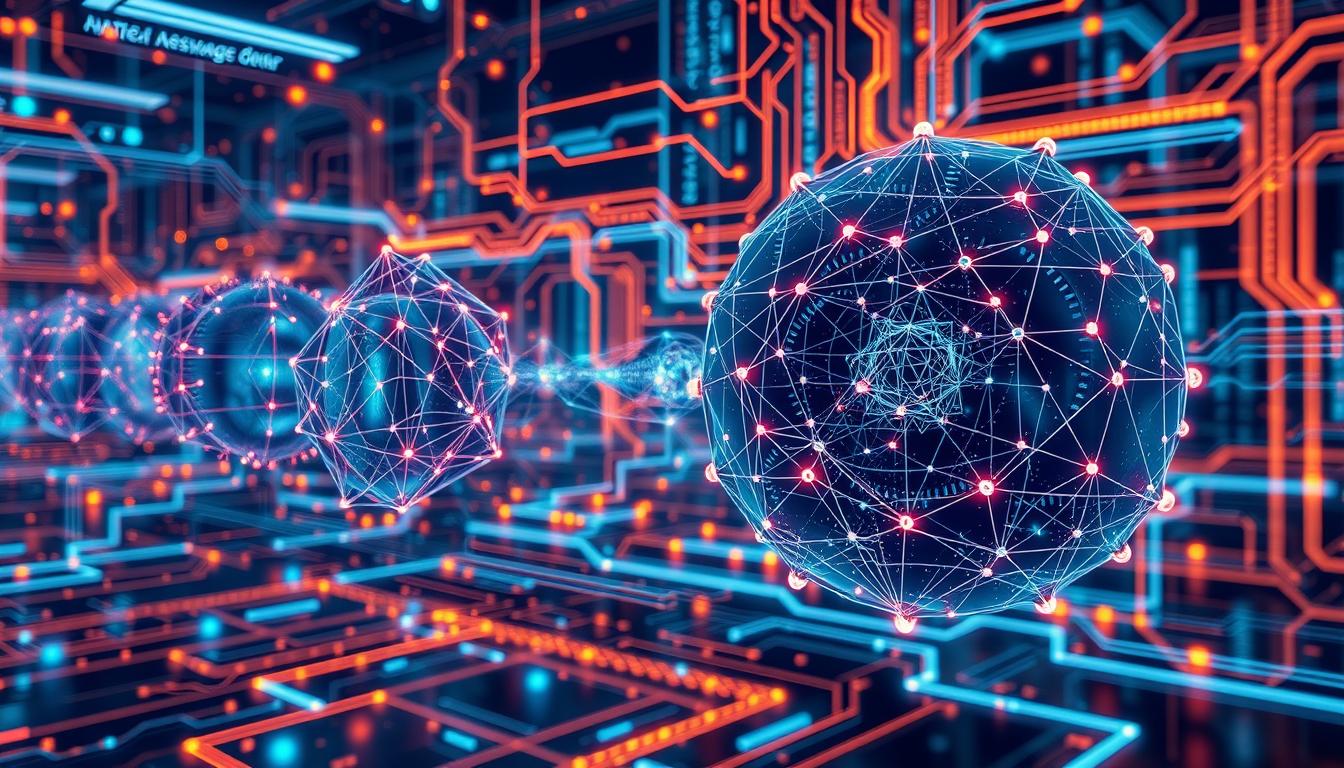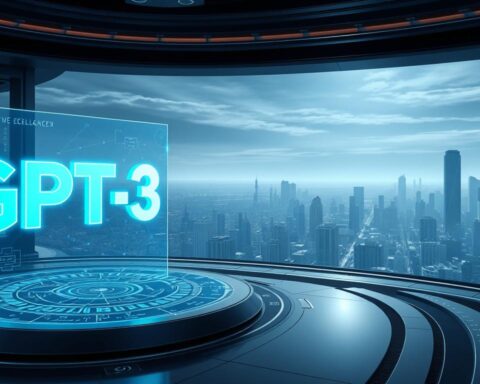Introduction to Neural Networks: Breaking Down the Basics
Neural networks, a foundational concept within deep learning, are designed to mimic how the human brain processes information. They consist of interconnected nodes called neurons that work in layers to analyze and interpret data. Each neuron processes inputs, applies weights to them, adds a bias, and passes the result through an activation function before passing it to the next layer. This layered structure allows neural networks to learn complex patterns and relationships in data.
The architecture of a neural network typically includes three fundamental types of layers:
- Input Layer: This layer receives raw data and serves as the starting point for information flow. Each neuron in this layer corresponds to a specific feature in the dataset.
- Hidden Layers: These layers sit between the input and output layers. They perform feature extraction and transformation by finding patterns within the data. A network can have one or several hidden layers based on its complexity.
- Output Layer: The final layer produces predictions or categorizations. For example, in image recognition, the output layer might assign probabilities to different classes like “cat” or “dog.”
Neural networks rely on training to adjust their internal parameters. During training, labeled datasets are fed into the network, and mathematical algorithms, such as backpropagation and gradient descent, update the weights and biases to minimize prediction errors. As training progresses, the network gradually becomes better at handling complex inputs.
Applications of neural networks are diverse, ranging from natural language processing and computer vision to game strategy and robotics. By systematically transforming input data as it moves through the layers, neural networks enable machines to perform tasks that mimic human cognition.
The Inspiration Behind Neural Networks: Mimicking the Human Brain
Neural networks are computational systems influenced by the structure and functionality of the human brain, particularly the biological neural networks that underlie human cognition and perception. At the heart of the brain lies a vast web of interconnected neurons that communicate with one another through electrical and chemical signals. These neurons process information efficiently, enabling activities such as learning, decision-making, and pattern recognition. It is this powerful ability that serves as the blueprint for artificial neural networks in deep learning.
The human brain’s neurons are connected by synapses, which are junctions enabling signal transmission. Similarly, artificial neural networks consist of artificial neurons, often called nodes or units, connected by layers. These layers—input, hidden, and output—mimic the hierarchical processing observed in the brain. Each artificial neuron takes in inputs, applies weights, and passes the result through an activation function, reminiscent of how biological neurons respond to stimuli.
The concept of mimicking the brain has long intrigued scientists. Early studies in neuroscience provided key insights into how neural activity underpins learning. Concepts such as Hebbian learning, which emphasizes that “neurons that fire together, wire together,” shaped the development of algorithms that guide artificial neural networks. These algorithms aim to replicate how the brain strengthens or weakens certain connections based on experience and feedback.
Inspired by the brain’s adaptability, neural networks excel at tasks involving data patterns, from recognizing spoken language to detecting visual shapes. Through layering and connectivity, the artificial version seeks to mirror processes like abstraction and generalization. Understanding this biological inspiration illuminates why neural networks are so effective at solving complex problems across industries. As research into both neuroscience and machine learning progresses, the parallels between the two continue to shape technological innovation.
Key Components of a Neural Network: Neurons, Layers, and Connections
Neural networks, often inspired by the structure of the human brain, function as interconnected systems composed of three essential components: neurons, layers, and connections. These elements work in harmony to process information and enable complex computations.
Neurons: The Building Blocks
Neurons, also known as nodes, serve as the fundamental units of a neural network. Each neuron receives input, applies a mathematical operation such as a weighted sum, and processes the result through a non-linear activation function. The activation function, like ReLU or sigmoid, determines whether a neuron “fires,” effectively capturing non-linear patterns in data. Neurons are responsible for aggregating data and transmitting signals to other neurons, much like synapses in the brain.
Layers: Organizing Neurons
Neural networks consist of three main types of layers:
- Input Layer: This layer serves as the entry point for data, where raw features are fed into the network.
- Hidden Layers: These layers lie between the input and output layers and house the majority of neurons. Hidden layers perform intermediate computations, gradually transforming input features into meaningful patterns. The depth (number of hidden layers) often determines the network’s complexity.
- Output Layer: The final layer yields predictions or outputs based on the learned representations in the hidden layers.
Connections: Linking Neurons
Each neuron in a layer is connected to neurons in adjacent layers, creating a network of weighted links. Weights signify the importance of connections, and adjustments during training enable the network to learn. Backpropagation is the mechanism by which weights are updated to minimize the error in predictions. Additionally, biases are introduced to shift the activation function, enhancing the network’s ability to model diverse patterns.
Ultimately, these components together power the functionality of neural networks, enabling them to analyze data, recognize patterns, and make predictions.
How Neural Networks Learn: An Overview of Training and Backpropagation
Neural networks learn by identifying patterns and relationships within data. This process involves adjusting internal parameters, known as weights, to minimize differences between the network’s predictions and actual outcomes. The mechanism through which this learning occurs is referred to as training, and it relies on a technique called backpropagation combined with an optimization method like gradient descent.
Training begins with the forward pass, where input data is passed through layers of the network. Each layer processes the data using its weights and biases, generating an output. This output is compared to the true value using a loss function—a mathematical formula that quantifies how far off the predictions are. A high loss indicates inaccurate predictions, signaling the need for changes in the network’s weights.
Backpropagation is the step where these changes occur. It calculates gradients—partial derivatives of the loss function concerning each weight—by propagating the error backward through the network. This process ensures that every layer adjusts its weights appropriately based on its contribution to the error. Gradients determine the direction and magnitude of changes required to improve performance.
An optimizer, such as stochastic gradient descent, updates the weights using these gradients. It takes small steps in the direction that reduces the loss, preventing large, destabilizing updates. Over time, as the process repeats across multiple iterations on the dataset (known as epochs), the network refines its weights and improves its predictive ability.
Regularization techniques, like dropout or weight decay, are often incorporated to prevent overfitting, ensuring the network generalizes well to unseen data. This cyclical interaction between forward passes, backpropagation, and optimization is central to how neural networks achieve learning.
Understanding Activation Functions: Adding Non-Linearity
Activation functions play a crucial role in the architecture of neural networks by introducing non-linearity to the model. Without them, even complex deep networks would behave like simple linear regression models, limiting their ability to capture intricate patterns in data. Activation functions are mathematical equations applied to the output of neurons, determining whether they should activate based on specific thresholds or transformations.
The addition of non-linearity enables neural networks to model complex relationships between input features and desired outputs. This facilitates tasks such as image recognition, natural language processing, and speech analysis, which often involve highly non-linear and multi-dimensional data.
Some of the most common activation functions utilized in deep learning include:
- Sigmoid Function: Produces an S-shaped curve, outputting values between 0 and 1. It is often used in the final layers of classification models as it maps probabilities effectively. However, it suffers from vanishing gradients, limiting its usefulness in deep layers.
- ReLU (Rectified Linear Unit): Outputs zero for negative inputs and the input itself for positive values. It is computationally efficient and resolves the vanishing gradient issue, making it a popular choice. However, its tendency for “dead neurons” when gradients become stuck at zero is a drawback.
- Tanh (Hyperbolic Tangent): Similar to sigmoid but maps inputs to a range of -1 to 1, allowing strong negative signals. It mitigates some limitations of sigmoid but still faces vanishing gradient issues.
- Softmax Function: Converts raw scores into probabilities, ensuring all outputs sum to 1. This property makes it ideal for multi-class classification problems.
Activation functions pave the way for neural networks to learn complex patterns, improving their ability to generalize to unseen data while enhancing their performance across domains.
Types of Neural Networks: From Feedforward to Recurrent
Neural networks come in various architectures, each designed to handle specific types of tasks and data structures. These architectures differ in how neurons are connected, how data flows, and the way learning occurs within the network.
Feedforward Neural Networks (FNNs)
Feedforward neural networks represent the simplest form of neural networks. In these networks, data flows in a single direction—from input to output—without looping back. Layers are structured hierarchically, consisting of an input layer, hidden layers, and an output layer. FNNs are best suited for tasks like image classification, where each input generates a direct output.
Convolutional Neural Networks (CNNs)
Convolutional neural networks are specialized for processing structured data, particularly images. They utilize convolutional layers that apply filters or kernels to analyze spatial features, such as edges, patterns, or textures. Pooling layers are often incorporated to reduce dimensionality and optimize computational efficiency. CNNs excel at image recognition, object detection, and even medical image analysis.
Recurrent Neural Networks (RNNs)
Recurrent neural networks handle sequential data effectively, such as text, time-series data, or audio signals. Unlike feedforward networks, RNNs have connections that allow information to persist, enabling them to capture temporal relationships. The architecture includes loops in the layers, making it ideal for applications like language modeling, speech recognition, and predictive analytics.
Long Short-Term Memory Networks (LSTMs) and GRUs
To address the common issue of long-term dependency in RNNs, LSTMs (Long Short-Term Memory networks) and GRUs (Gated Recurrent Units) were developed. These variants use gating mechanisms to control how information flows through the network, ensuring older inputs retain significance when processing longer sequences. Applications range from machine translation to stock price prediction.
Generative Adversarial Networks (GANs)
Generative adversarial networks consist of two parts: a generator and a discriminator. The generator creates data similar to a target dataset, while the discriminator evaluates its authenticity. This adversarial setup leads to highly refined outputs. GANs are widely used for creating realistic images, deepfake videos, and data augmentation.
Transformer Networks
Transformers revolutionized natural language processing by introducing attention mechanisms that focus on relationships between data points in a sequence. Unlike RNNs, transformers process all inputs simultaneously, enhancing efficiency. Their application spans language translation, summarization, and even protein structure modeling.
Modern neural network types are built for adaptability and efficiency, allowing breakthroughs across industries and domains. Each architecture serves a unique purpose, tailored to its specific data needs and complexity.
The Role of Neural Networks in Deep Learning
Neural networks play a pivotal role in deep learning, serving as the backbone for complex computations and data-driven insights. At their core, neural networks are inspired by the structure and functioning of biological neurons, replicating the processes of learning, reasoning, and decision-making in artificial systems. A neural network comprises layers of interconnected nodes, or units, which collectively process and transform data to uncover patterns and generate predictions.
Deep learning harnesses neural networks to solve problems that involve vast and complex datasets. In these systems, the networks consist of multiple layers, with “deep” referring to the numerous layers stacked upon one another. Each layer performs a specific function, starting from basic feature extraction to high-level abstractions. These hierarchical representations enable the network to understand intricate relationships within the data, making it ideal for tasks like image recognition, natural language processing, and speech synthesis.
The role of neural networks in deep learning is heavily focused on learning from data. Through techniques like forward propagation and backpropagation, neural networks adjust their internal parameters, or weights, to improve accuracy over time. This iterative learning process relies on optimization algorithms, such as gradient descent, that minimize errors during training. As a result, neural networks exhibit adaptability and robustness, becoming increasingly effective with larger and more diverse datasets.
Neural networks also contribute to generalization, a key aspect of deep learning. They are designed to perform well on unseen data, allowing applications to scale effectively in real-world scenarios. The models achieve this by identifying patterns rather than memorizing data, which prevents overfitting. Neural networks also integrate activation functions, such as ReLU or sigmoid, to introduce non-linearities, further enhancing their capacity to handle complex problem spaces.
These systems provide solutions across industries, powering significant advancements in fields ranging from healthcare diagnostics to autonomous vehicles. Neural networks enable machines to interpret and act upon data with remarkable accuracy, continually evolving as new architectures—such as convolutional and recurrent neural networks—are developed. Through their transformative capabilities, neural networks have become indispensable to the success of deep learning.
Applications of Neural Networks: Real-World Use Cases
Neural networks have revolutionized the way various industries approach complex problems, enabling computers to perform tasks that previously required human intelligence. Their ability to process vast amounts of data and uncover patterns has transformed numerous sectors, yielding impressive applications.
1. Healthcare and Medical Diagnosis
Neural networks are widely used in healthcare for tasks like disease detection, medical image analysis, and predictive diagnostics. For example, convolutional neural networks (CNNs) are employed to analyze X-rays, MRIs, and CT scans to identify tumors, fractures, and other anomalies. Furthermore, neural networks assist in predicting patient outcomes, enabling early intervention and personalized treatment strategies.
2. Natural Language Processing (NLP)
In the realm of language-based tasks, neural networks enable machines to understand, interpret, and generate human text. Applications include sentiment analysis, automatic translation (e.g., English to French), chatbots, and voice-based assistants like Siri or Alexa. Transformers like GPT models have significantly advanced NLP, allowing for coherent responses and context-aware interactions.
3. Finance and Fraud Detection
Financial institutions deploy neural networks to identify fraudulent transactions, assess risks, and predict market trends. By analyzing patterns across thousands of transactions, these systems can spot irregularities with high accuracy. Credit scoring and stock market forecasting also benefit from these predictive capabilities, ensuring informed decisions and enhanced security.
4. Image and Object Recognition
Image recognition is a standout application of neural networks, underpinning technologies like facial recognition systems, autonomous vehicles, and surveillance systems. Neural networks can accurately classify objects, detect pedestrians, and assess road conditions, enabling safer interactions between humans and machines.
5. Gaming and Entertainment
The gaming industry leverages neural networks for creating intelligent, adaptive non-playable characters (NPCs) and enhancing graphics. In addition, neural networks power video and music recommendation systems on platforms like YouTube and Spotify, personalizing user experiences based on viewing or listening history.
6. Climate Science and Environmental Monitoring
Climate researchers use neural networks to analyze satellite images, track deforestation, or forecast weather patterns. In agriculture, these systems predict crop yields and assess soil health. By processing vast datasets, neural networks contribute to better environmental decision-making and sustainable practices.
Applications of neural networks continue to expand, driven by advancements in deep learning and increasing computational power. They are instrumental in shaping the future across diverse domains.
Challenges and Limitations of Neural Networks
Despite their remarkable capabilities, neural networks are not without their challenges and limitations. These issues affect their practicality, reliability, and scalability in a range of real-world applications.
Data Dependency
Neural networks depend heavily on large, high-quality datasets. If the training data is insufficient, imbalanced, or contains noise, the performance of the model diminishes significantly. Moreover, collecting and labeling such datasets can be both time-consuming and resource-intensive, particularly in domains like healthcare or natural language understanding.
Computational Costs
The training of neural networks is computationally expensive, especially for deep architectures. Training large networks often requires advanced hardware such as GPUs or TPUs, which can be costly. In addition, the growing energy demands of such computations have raised concerns about their environmental impact.
Interpretability
Unlike traditional machine learning models, neural networks operate as black boxes, making it difficult to interpret the decision-making process. This raises challenges in fields requiring transparency, such as finance, healthcare, or law. The complexity of neural networks complicates the task of identifying why a certain prediction or classification was made.
Overfitting
When neural networks are trained on small datasets or poorly regularized, they may overfit to the training data. Overfitting causes models to memorize details of the training set rather than learning generalizable patterns, leading to poor performance on unseen data.
Hyperparameter Sensitivity
Neural networks require careful tuning of hyperparameters such as learning rates, the number of layers, and activation functions. This process is often trial-and-error, demanding significant expertise and experimentation.
Ethical and Bias Concerns
If biased or unrepresentative data is used during training, neural networks can perpetuate and even amplify societal biases. This presents serious ethical implications, particularly in applications like hiring, policing, or loan approvals.
Addressing these challenges requires ongoing research, effective methodologies, and responsible practices.
The Future of Neural Networks and Deep Learning
The future of neural networks and deep learning is poised to revolutionize a wide spectrum of industries and reshape how humans interact with technology. With the continuous progression of computational power and the availability of massive datasets, researchers are building models capable of solving increasingly complex tasks. Emerging trends and advancements suggest the boundaries of what these systems can achieve are expanding at an unprecedented pace.
One promising avenue lies in the development of more sophisticated architectures such as transformer networks. These models, particularly those powering large language models, are being refined to perform tasks beyond natural language understanding, including code generation, complex reasoning, and multimodal integrations involving text, images, and audio.
The pursuit of explainable AI (XAI) is another critical facet of future exploration. Efforts are being directed toward making neural networks more interpretable, addressing the “black box” problem that has long concerned critics. More transparent decision-making mechanisms could increase trust and lead to wider adoption in sensitive sectors like healthcare, law, and finance.
Artificial General Intelligence (AGI) is a vision driving contemporary research, striving for systems that can generalize knowledge across domains. Although current neural networks excel at narrowly defined problems, achieving this level of adaptability requires innovations in algorithms and architectures.
Another key focus is energy efficiency. The computational intensity of training and deploying deep neural networks has raised concerns about sustainability. New approaches such as pruning, quantization, and neuromorphic computing are being explored to build greener AI systems.
Collaboration between AI and neuroscience is expected to yield further breakthroughs. By mimicking the human brain more closely, researchers aim to create models that learn faster, process information more intuitively, and adapt dynamically.










